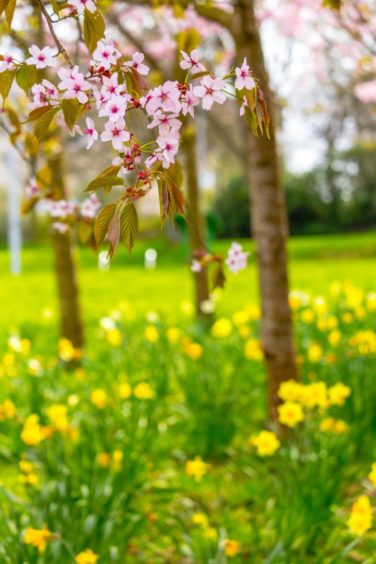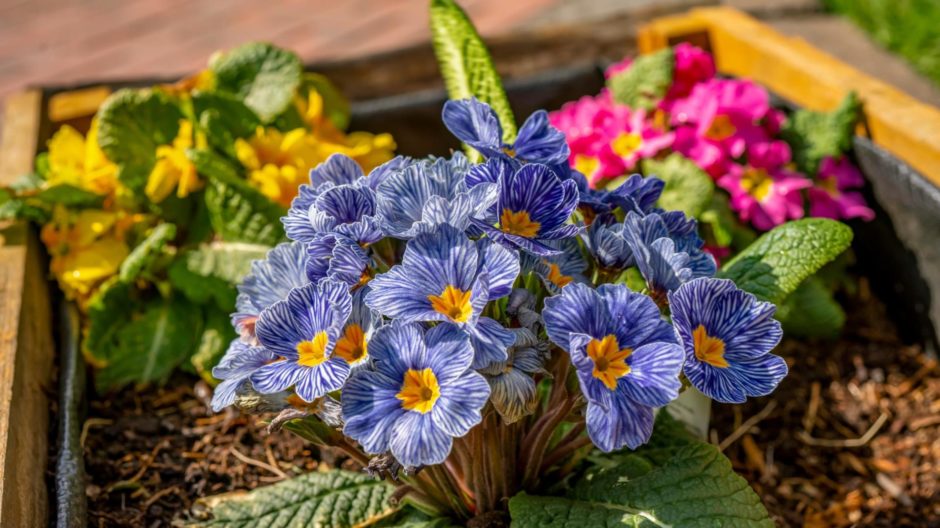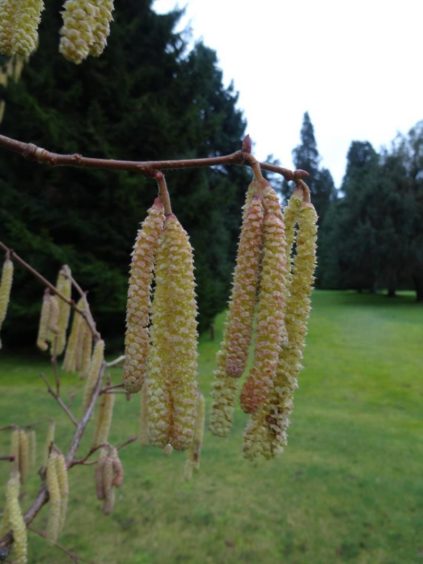It’s hard to believe it’s been as good as a year since our way of life was transformed so dramatically. Not that any of you need me to remind you.
I keep a garden diary, a written record of all the jobs that we do and when, that maybe the head gardeners of the future at Scone Palace will one day find useful.
When I was scanning through my diary for 2020 , I was quite surprised just how much we were carrying on with the works as normal this time last year, preparing for spring and summer, completely oblivious to what was coming.
Even through April and into May, while only two of us were looking after the vast grounds, I was still sowing veg for the Kitchen Garden as if this Covid-19 wave would pass over us and life would be at least normal-ish come June. Showing my naivety here.
But it’s a year on and these tough times continue for us all and the industry I love being a part of.
Springtime, beginning at Mothers’ Day, is when our local garden nurseries and centres wake up after their dark months of slumber before really bursting back to life at the Easter weekend as all gardeners like you and I descend on them, needing replenished after a winters hibernation.
There’s no doubt as we look to brighten up our sitting rooms with bunches of daffodils, selecting packets of seeds and collecting bags of composts for the veg plot plus picking out perennials to plug gaps in our borders for the gardening year ahead, this is an important period coming up for garden retailers.
Lockdown last year meant they were closed unable to trade properly bar those who could manage a delivery service and unfortunately the timing again sees the same problem a year later.
If we look further back the chain it is not only they who are affected but the growers who supply them. Already they are growing the pansies, primulas, geraniums, petunias and marigolds, indeed ALL the plants that make up our magnificent and colourful spring and summer bedding displays, sadly like last year unsure when our garden centres and nurseries will be open and trading so to buy their stock which can be sold onto us.
Of course the priority is to get this pandemic under control, we can just only hope that the timing of which restrictions are allowed to be eased, can benefit our plant selling businesses.
While we are waiting we can still do our bit to support our local garden centres as many just now are offering click and collect or delivery services to keep us gardening. I for one have been very grateful for this; with the snow finally gone I’ve at long last been able to get outside and on with some meaningful gardening work at home, planting out some lovely dark-purple Hellebores in amongst the white of snowdrops and the yellow of winter aconites.
Let’s not forget our favourite gardens too. Normally we would be well into The Scottish Snowdrop Festival which sees the start of the season for many who would be opening their gates to us, being able to walk around and enjoy fantastic displays and specialist collections, receiving much needed income to fund their maintenance. Very soon they will be welcoming us again and I cant wait to be able to meet up with family and friends in beautiful surrounds.
I am enjoying seeing our Scottish native hazel, Corylus avellana. It is a welcome sight as it is telling me winter has finally come to end.
A good choice for almost every type of soil, these multi-stemmed shrubs can reach up to five metres tall, forming a nice rounded shape.
The flowers are borne on long and hanging yellow catkins in late winter and early spring, if you have both a male and female closely beside each other the cobnuts produced will be enjoyed by red squirrels – if you are lucky enough to have them where you live.
Every plant I grow must earn it’s keep in some way and this certainly does, as I harvest the long, straight stems these shrubs produce as supports for beans in the veg plot or for sweet peas to scramble up instead of imported bamboo canes.
I like the look they add to the kitchen garden too. For these times when we need to be more sustainable in the way we live I couldn’t think of a more useful plant.
I prefer to nibble away at stems each spring after the catkins have dropped, cutting them right down to the ground when around five centimetres, or a couple of inches thick, although this can be done to the whole plant in a process called ‘coppicing’, allowing three to five years to re-grow before the it is done again.
If you would prefer a more unusual version, one that makes a nice talking point for your garden, then choose a ‘corkscrew hazel’ with amazing twisted branches, perfect for taking a snip off the end and placing in a vase with cut flowers such as snowdrops or miniature daffodils for a novel table decoration.













